No Products in the Cart
Zulekha Nishad, based in India, is a skilled content specialist, copy editor, and creative content writer with a Master's degree in English Language and Literature. Read more
Last Updated April 18, 2025
Mom, dad, when are you going to buy me a big kid bed? I'm not a baby anymore! Oh, is that what this is about? You're finally going to break down and get me that big kid bed I've been asking for? Yay!!! But wait, what do you mean by "big kid bed?" Do you mean...a twin bed? A full bed? A California king?! Because I'm not sure which one of those I want. HELP!!!
Key Takeaways:

Well, well, well, the decision of what size mattress to buy for your child is an important one. Kids these days are growing up so fast! It seems like only yesterday they were taking their first steps, and now they're almost ready for their own beds. In this blog post, we will discuss the different mattress sizes available for kids and help you choose the right one.
Sleep is a vital part of everyone's day-to-day routine and an indispensable part of a healthy lifestyle. Research has shown that children's sleep is highly linked to brain development, emotional regulation, overall mental and physical health, and a great quality of life. Not getting enough sleep can lead to high blood pressure, obesity, and even depression.
While there are many things you can do to help your child get a good night's sleep, such as establishing a bedtime routine, one of the most important steps is investing in a good mattress. A comfortable mattress will provide the support your child's body needs, helping to reduce tossing and turning throughout the night.
When choosing the best mattress for kids, size is important. A mattress that's too small will be uncomfortable, while one that's too large will make it difficult for your child to move around and get in and out of bed.
If you are confused about where to start, take measurements of your child's bed. After that, read the mattress size chart given below to find the perfect size.

A crib mattress is a small-sized mattress designed for use in a baby crib. They are usually made from firm, durable materials such as foam, and they are covered with a removable and washable fabric cover. Crib mattresses must meet strict safety standards, and they are typically tested for flammability and toxicity.
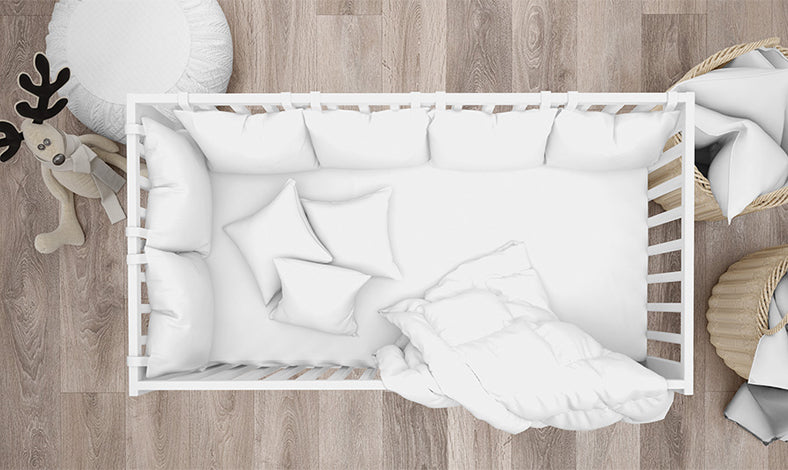
Crib mattresses are available in different sizes - standard size, a mini version, and they are even available in special shapes such as circles and oval to give a fancy look. You can choose the one based on your style and room size.
However, one important thing you should keep in mind while buying a crib mattress is that it should snugly fit the crib. Also, you've to make sure that the actual gap between the mattress and crib is no more than half an inch. This is especially important to prevent head entrapment and suffocation between the mattress and the sides of the crib.
The standard full crib mattress size is rectangular in shape and the most popular choice. It's pretty big and does not outgrow your baby very quickly.
Since child safety is important when buying a crib mattress, its dimensions have been standardized under federal government regulations. According to the United States Consumer Product Safety Improvement Act of 2008, a standard crib mattress should be 27 ¼ inches by 51 ¼ inches. To ensure a snug fit, its interior dimensions should be around 28 inches by 52 ⅜ inches (up to ⅝ inch smaller allowed).
Mini crib mattresses usually come along with mini cribs. These mattresses are 24 inches wide and 38 inches long.
Some mini cribs can be folded for travel and storage. They often include wheels, but make sure you lock the wheels when the baby is in the crib.
While both standard and mini crib mattresses are rectangular, shaped crib mattresses often come in fancy shapes like circles, oval, or hexagonal to attract customers. Just like the mini cribs, the dimensions of shaped cribs are not regulated; therefore, they are also sold along with a mattress.
Special shaped crib mattresses can be smaller or larger than the standard crib mattress, so make sure to keep in mind your room size when buying one.
Well, babies may outgrow mini crib mattresses in 16 -18 months, whereas standard crib mattresses can last as long as three years. So, if your ultimate aim is to buy a crib mattress that will last longer, it's best that you go for the standard size.
A standard twin mattress, also known as a single mattress, measures 38 inches by 75 inches and is perfect for children who are transitioning from a crib to a bed. It's also big enough to fit your little ones as they grow taller, so you don't have to worry about buying a new one as they get older.
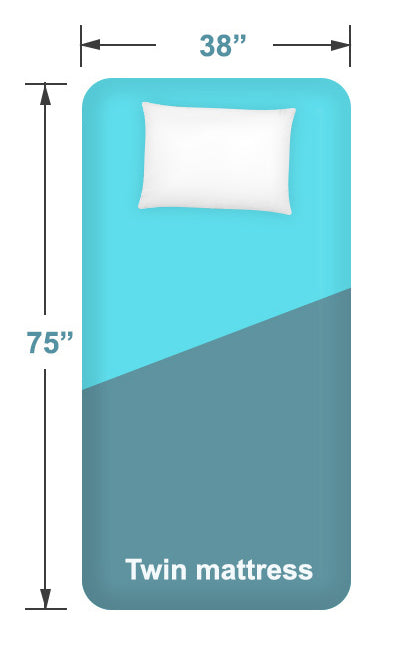
If you have a single child and limited space, a twin size is often the best option. They can easily fit in rooms as little as 7 by 9 feet. You may need a bedroom that's at least 8 by 10 square feet to accommodate a twin bed in addition to other pieces of furniture.
Twin mattresses are usually less expensive than larger mattresses, making them a budget-friendly option.
Twin XL mattresses measure much similar to that of a standard twin in terms of width, but these mattresses are five inches longer, measuring 38 inches by 80 inches. In fact, it can be considered a long twin mattress. The extra length of twin xl can be great for teens who are taller and need a few extra inches in legroom.
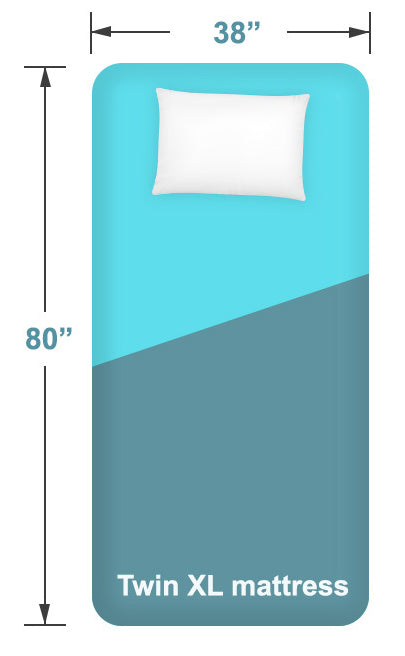
Most dorm rooms have a twin XL size bed frame. So, if your teenager will be heading to a dorm in a few years, getting this size mattress can make it more affordable for them to use a dorm mattress.
Like twins, a twin xl mattress doesn't require a lot of space and is less expensive. The smallest room space you should use to fit a twin XL size bed is 8 by 10 feet.
Full-size mattresses, also known as double mattresses, are another common mattress size for kids, measuring 54" by 75".
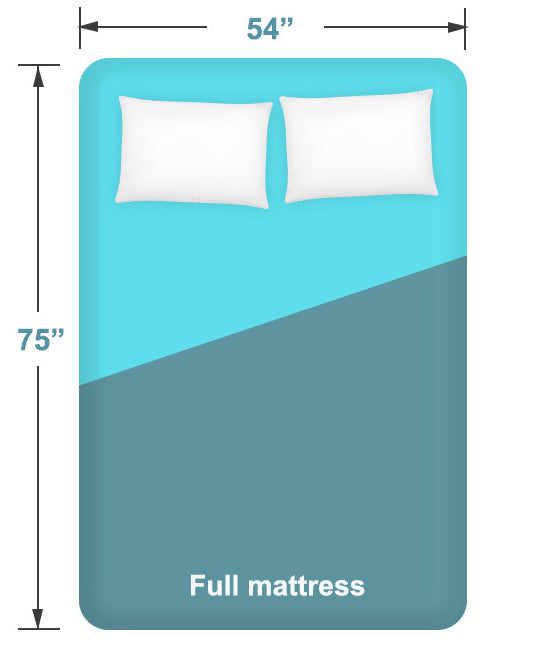
A full-size mattress is a viable option for kids who are older and/or taller or who share a bed with their siblings as they provide enough space to sleep comfortably. However, full-size mattresses are not recommended for parents who sleep with their kids (i.e., a total of three sleepers).
Full mattresses fit into most rooms without making them look crowded. The minimum recommended room size of a full bed is 9 feet 6 inches by 10 feet 6 inches. They are more expensive than a twin and twin xl but less expensive than a queen or a king-size mattress.
A queen-size mattress measures 60 inches by 80 inches and is perfect for larger bedrooms or children who prefer more space when sleeping. The minimum recommended room size for a queen mattress is 10 feet by 10 feet.
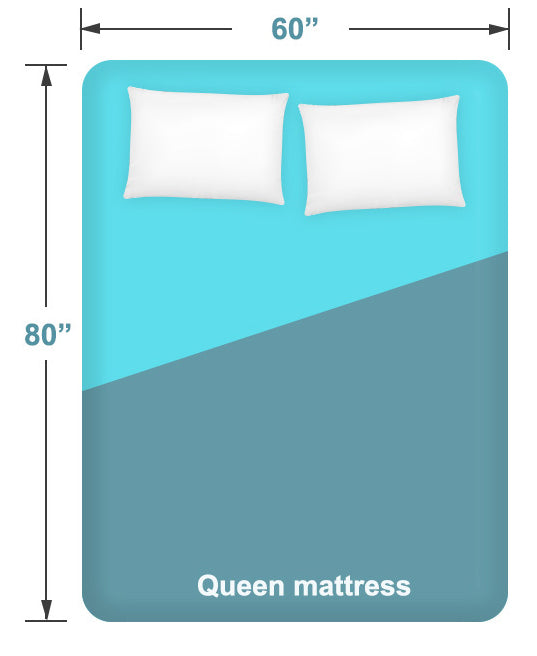
A standard queen-size mattress can accommodate many sleepers. However, they tend to be more expensive than other popular kids' mattresses, so you'll need to have a bigger budget if you want to go with this option.
Queen mattresses also come in a split queen style. In this option, the mattress is split into two equal halves to provide for sleepers who have different mattress preferences.

A king-size mattress is a great option for children who enjoy having plenty of space for themselves or for kids who share their beds with the family. The minimum recommended room size for a king mattress is 12 feet by 12 feet.
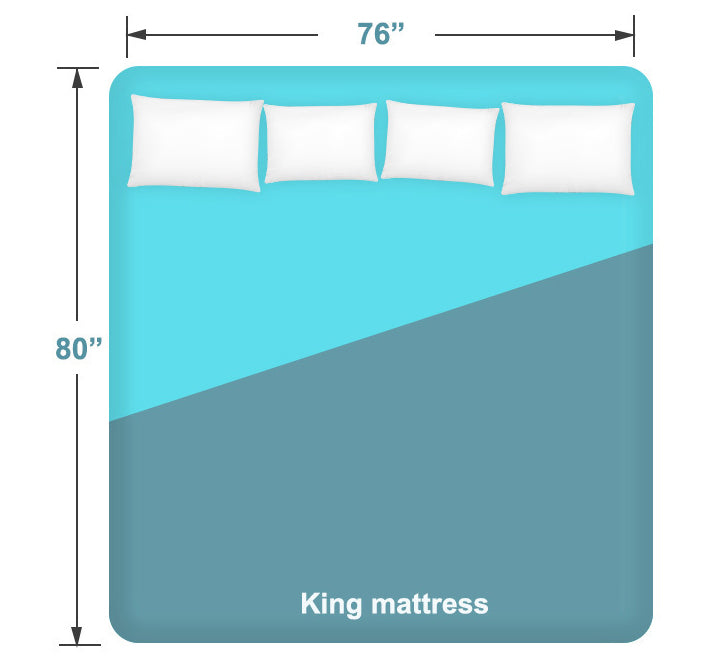
Not only is it significantly larger than other standard kids' mattresses, but it also provides several benefits that can be extremely beneficial for kids. For example, a king-size mattress gives children the opportunity to spread out and sleep in any position they desire.
King mattresses can help to reduce the risk of nighttime accidents, as there is simply more space for kids to move around on a king-size mattress.
Since king mattresses are large enough to accommodate many sleepers, they are very expensive. If you are looking for a budget-friendly kids mattress, a king might not be the best option for you.
Trying to come up with a bedroom solution for multiple children, or even just limited space in general might be a bit difficult for parents. But never fear! There are plenty of ways to make the most of a small space.
Daybeds are a great option for kids who share a room; they can be used as a bed at night and a sofa during the day. It features a three-sided bed frame, that is, two sides that function as a headboard and a footboard, and a third side that serves as the backrest of a couch.
They are available in different sizes and can be upholstered in any type of material. The most common size is a twin, which is 38 by 75 inches, but daybeds can also be found in full, double, twin XL, and narrow twin sizes. No matter what size you need, daybed frames are compatible with standard mattress sizes, so shopping is easy and straightforward.
Apart from being an incredible choice for kids, day beds are great for bedrooms, living rooms, home offices, and sunrooms. They offer a comfortable place to relax during the day and can be easily converted into a guest bed for overnight guests.
A trundle bed is a two-in-one design that can be a great space-saving solution. The top bed is a traditional bed with a frame, while the lower bed is composed of a mattress platform on wheels.
Trundles are often Twin-sized and low to the ground, but Full-sized trundles are also not uncommon. The lower mattress is usually thinner than a standard mattress, and a typical trundle mattress is 8" thick.
Trundle beds can be a great option for guests or for children who need an extra bed during sleepovers.
Bunk beds are a super cool way to save space in a small room. But they're also a lot of fun for kids! Bunk beds are a single unit that contains at least two beds stacked one above the other. This means you get to accommodate two beds for the floor space of one. Most bunk beds hold twin mattresses.

Sleeping in a bunk bed can make bedtime feel like an adventure. And if you have more than one child, bunk beds can make it easier for them to play together and bond as siblings.
There are different types of bunk beds. Some have stairs instead of a ladder, and some even come with a slide!
Cabin beds are elevated beds with space below, making them ideal for kids who love to pretend and play.
Whether your little one likes to pretend they're on a pirate ship or camping in the woods, a cabin bed will give them the perfect space to set up their adventure. And when playtime is over, they can easily climb into bed and get a good night's sleep.
Let's discuss the different factors that determine the right size bed for your child.
The right size bed for your child will depend on their age. For toddlers, a twin bed is recommended, while a crib is suitable for infants. Older children may require a larger bed, such as a full or queen-size bed.
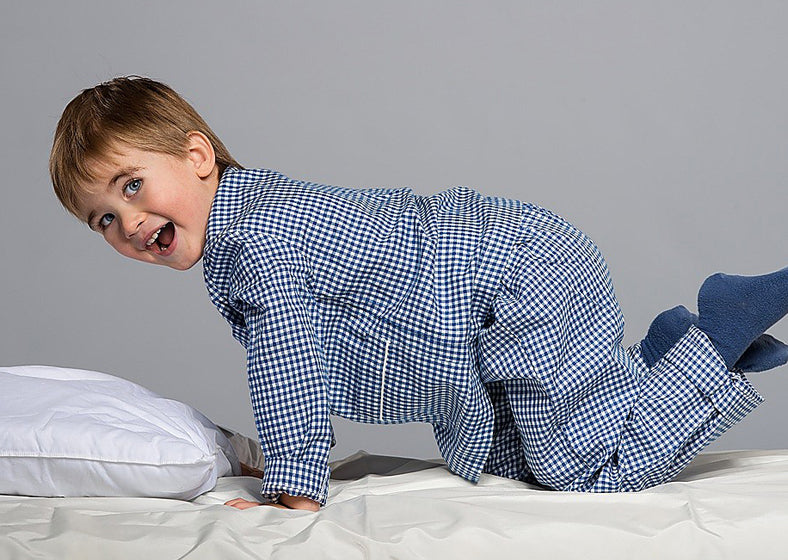
If you are limited on bedroom space, you may want to consider a smaller bed size for your child. A twin size or full-size bed may be the best option if your child has their own bedroom. If they are sharing a bedroom with siblings, a bunk bed or loft bed may be a better option.
If your child shares a bed with parents or siblings, it is important to choose the one that will accommodate everyone comfortably. A queen-size or king-size bed may be necessary in this case.
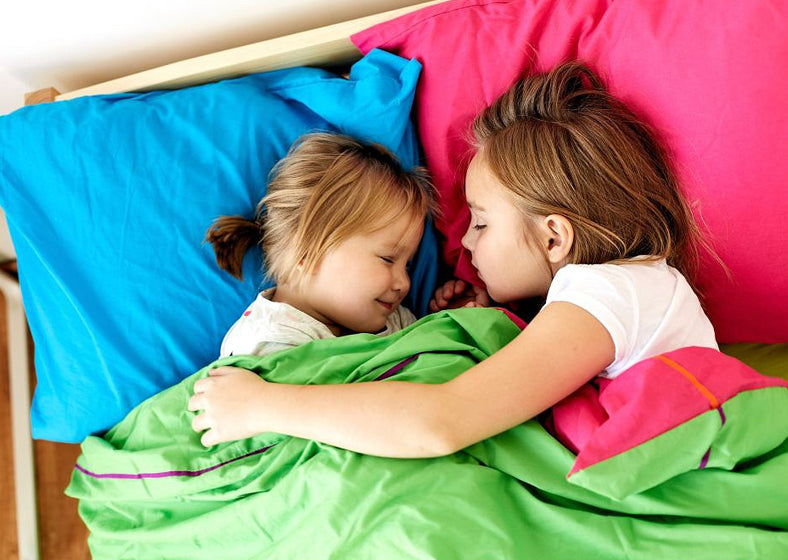
Most crib mattresses are approximately 28 inches wide by 52 inches long, which is slightly smaller than a twin-size mattress. This size is necessary to ensure that the baby has plenty of room to move around but that there are no gaps between the mattress and the sides of the crib where the baby could become trapped.
Crib mattresses are also typically much thinner than adult mattresses, as this helps to reduce the risk of SIDS.
For a toddler bed, choose a mattress that is at least 28 inches by 52 inches. This will give your little one plenty of room to grow without being too big for the bed frame.
There isn't much difference between a crib and a toddler mattress. In fact, there is no standard size toddler bed, and most toddler mattresses are actually the same size as a standard crib mattress. Standard crib mattresses measure 28 inches by 52 inches.
Single mattresses and twin mattresses are the same, measuring 38 inches by 75 inches. "Single" used to be the more popular used term in the mattress industry, but today, "twin" is more preferred.
A full-size bed and a double-size bed are the same, measuring 54 inches by 75 inches. In fact, these terms are often used interchangeably.
The three best mattresses for a teenager are twin, twin XL, and full. And while each has its own benefits, we think the best option depends on the individual.
For example, if your teenager is tall, a twin XL may be a better choice since they are big enough to provide plenty of sleeping space but not so large that they take up too much space in a bedroom. Twin XL mattresses are especially good for taller teenagers who need the extra length.
On the other hand, if your teenager tends to toss and turn at night, a full-size mattress may be a better option since it offers more room to move around.
Related blog posts:
1. Mattress Sizes Chart and Bed Dimensions Guide
2. Full Bed vs Double Bed - Is there a difference
5. Twin vs. Full vs. Queen Mattress
So yeah, what's the best size mattress for your kiddo? It really depends on their age and how much space they need. Whichever size you choose, make sure to get a good quality kids mattress that will provide your child with plenty of comfort and support as they sleep.
Do you have any more questions about finding the right-sized mattress for your child? Leave us a comment below, and we'll help you out!
Disclaimer: What is said in this article has been referenced from multiple sources and is intended only for educational and informational purposes. Please note that no content in this article is a substitute for professional advice from a qualified doctor or healthcare provider. Always consult an experienced doctor with any concerns you may have regarding a health condition or treatment, and never disregard any medical suggestions or delay in seeking treatment because of something you read here.
Notify me when available
We will send you a notification as soon as this product is available again.
We don't share your email with anybody


